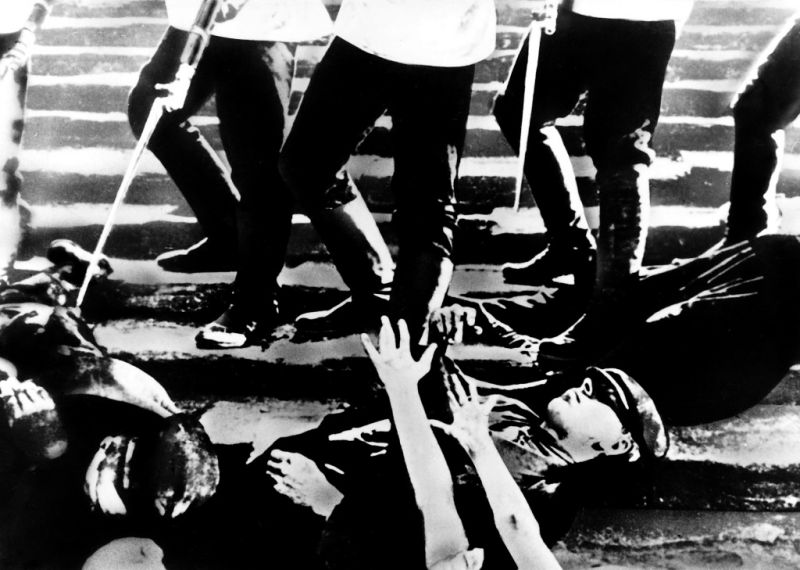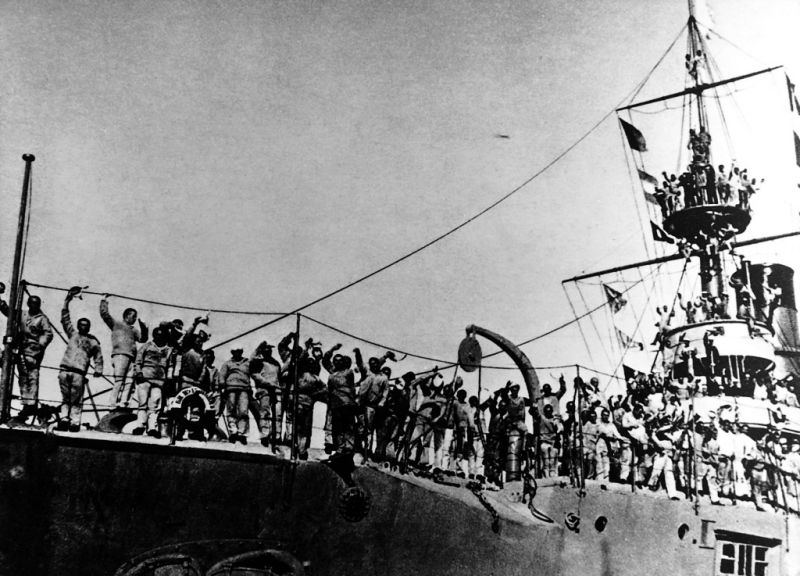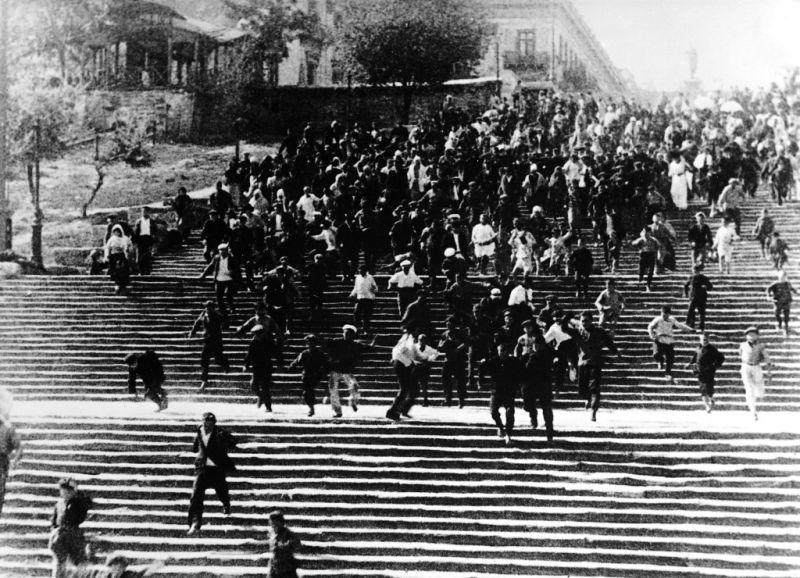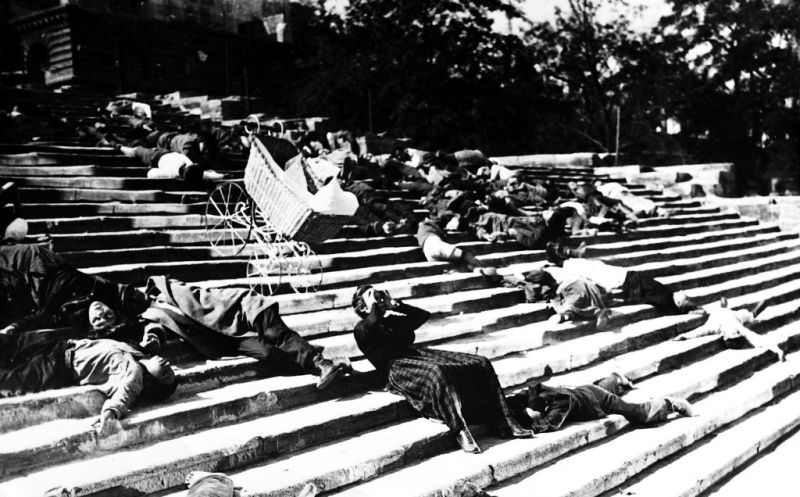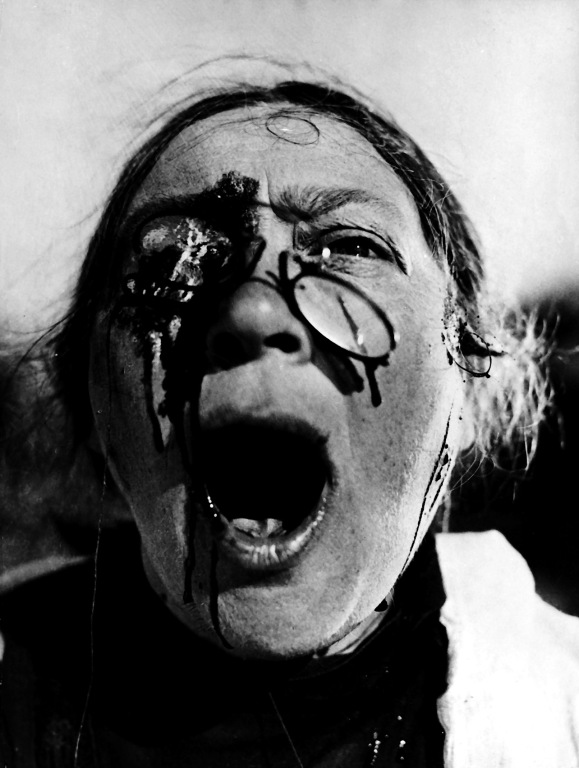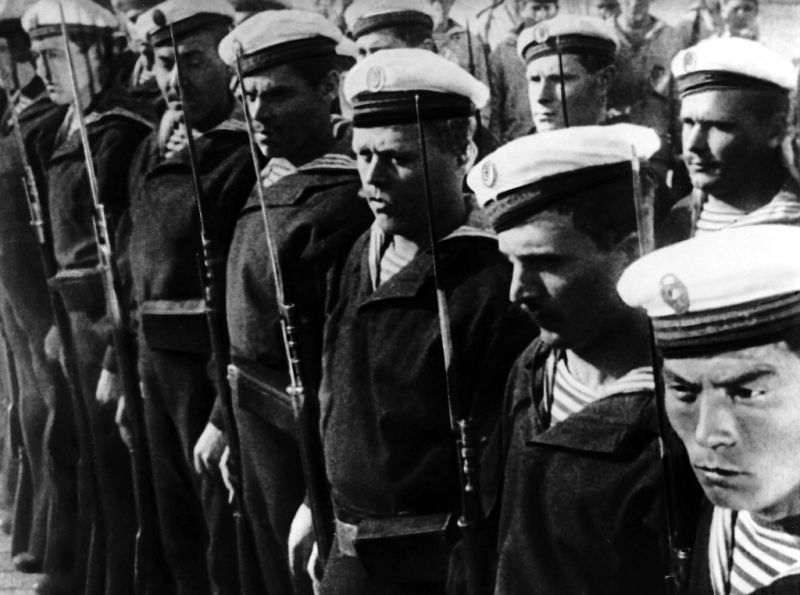Броненосец «Потемкин»
| Year | 1925 |
|---|---|
| Country | USSR |
| Tagline | Revolution is the only lawful, equal, effectual war. It was in Russia that this war was declared and begun |
| Director | Sergei Eisenstein |
| Cinematography | Эдуард ТиссэВладимир Попов |
| Scriptwriters | Нина АгаджановаSergei EisensteinСергей Третьяков |
| Music | Eric AllamanYati DurantVladimir Heifetz |
| Art Direction | Василий Рахальс |
| Editing | Григорий АлександровSergei Eisenstein |
| Genres | DramaHistory |
| USA Gross | $46 653сборы |
| Release Date | December 24, 1925 |
| MPAA | N |
| Runtime | 75 min. |
Plot Summary
Did You Know?
Red revolutionary flag painted on the film manually.
The film was first announced in 1930, and then restored and dubbed in 1950 (composer Nikolai Kryukov), and finally, in 1965, the music for the film was written by Dmitri Shostakovich.
In the words of Eisenstein, the idea of making the famous Odessa staircase came to him when he was sitting on the stairs, eating cherries, and bones rode the steps.
The film received high appraisal to the Minister of propaganda of the Third Reich Joseph Goebbels. At a meeting with filmmakers on March 28, 1933, he said: "This is a wonderful film. With a cinematic point of view it is incomparable. One who is not firm in their beliefs after seeing it, perhaps, even could become a Bolshevik. This once again proves that a masterpiece can be successfully laid, a certain tendency. Even the bad ideas can be promoted by means of art".
In the ranking of the ten most significant films of world cinema published by the British magazine Sight
In the original script the film was to light a number of episodes related to the revolution of 1905: the Russo-Japanese war, the massacre of the Armenians, the revolutionary events in Saint-Petersburg, the battles in Moscow. Shooting was supposed to conduct in a number of cities of the USSR.
Sergei Mikhailovich Eisenstein was delivered in a tight time frame: the film was required to be completed by the end of the year, although the screenplay was approved only on 4 June. Objectively assessing the situation, Sergei Eisenstein decided to abandon the original script and be limited to only one of his episodes the uprising on the battleship "Potemkin", which in the extensive scenario, Agajanova occupying a few pages (frame 41). Sergei Eisenstein together with Grigory Alexandrov substantially revised and expanded the script. In addition, in the course of work in the painting made the episodes not covered by any scenario Agajanova or script outline of the Eisenstein as, for example, the scene of the storm, which begins the film. As a result, the content of the film was very far from the original script Agajanova.
The film was shot in Odessa, which was then one of the centers of film production, and where it was possible to find a suitable for filming the ship.
The first screening of the film took place on 21 December 1925 at the ceremonial meeting dedicated to the anniversary of the revolution of 1905 at the Bolshoi theatre.
The battleship "Prince Potemkin-Tauride" by the time the film was scrapped, was ready for disposal and was in poor condition. Instead, the film was shot was in the port of Odessa battleship "Twelve Apostles." By this time he was turned into a floating warehouse of mines, which hampered the shooting. Scenes that took place inside the building, shot on the cruiser "Comintern".
According to eyewitnesses, the music if not so impressed the Director that he invited the composer to write music for his next film "October".
In 1925, after the sale of negative film in Germany and the program Director, Peel Jutzi, "Battleship "Potemkin" was released worldwide in different from the original author's version: the shooting of the sailors were moved from the beginning to the end of the film. In the future, it was censored in the Soviet Union: we've removed some footage and intermediate titles, words of Leon Trotsky in the prologue was replaced with a quote from Vladimir Lenin. In 2005, under the overall management of the Fund Deutsche Kinemathek, Gosfilmofond Russian state archive of literature and art, the author's version of the film was restored.
The film repeatedly became the object of citation and kinoproby, and in most cases attention is awarded the legendary scene of the massacre on the Potemkin stairs (in the movie "Return of "Battleship," "goodbye, Lenin", "the Naked gun 33 1/3", "Brazil" and "the Simpsons").
In the episode of the shooting the crowd a woman with a baby falls dead foot soldiers, and a minute later, when they start to go down, she is already head to him. Moreover, when they start to descend, she manages to move slightly apart before his feet.


